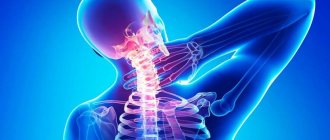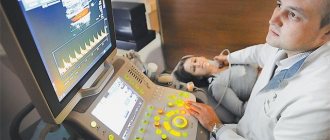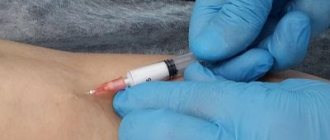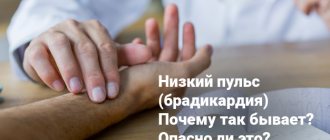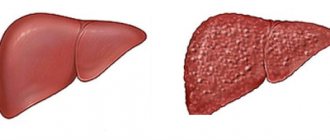Our expert is a rehabilitation doctor, author of the book “Health Medicine versus Disease Medicine. Another way. How to get rid of hypertension, diabetes and atherosclerosis” Alexander Shishonin .
Elena Nechaenko, AiF Health: Alexander Yuryevich, why are doctors unable to cope with the diseases of civilization?
Alexander Shishonin : The main reason is the rigidity of the medical worldview. Alas, modern medicine, at its core, is not much different from the alchemy from which it grew. She is still trying to find the philosopher's stone - a magic pill for all diseases and old age. And in treatment he relies on external influences, although in case of chronic diseases they are meaningless. With the help of drugs and surgery, only the effect can be removed, but not the cause. The inertial approach has led modern medicine to complete helplessness in the face of hypertension, atherosclerosis, type 2 diabetes, cancer and other diseases of civilization.
Article on the topic Therapeutic exercises for the neck. Set of exercises
The importance of physical therapy for cervical osteochondrosis
Therapeutic exercise (physical therapy) is a preventive exercise that prevents exacerbation of various diseases and is used very effectively for cervical osteochondrosis. Repeating the same exercise several times brings undeniable benefits. Exercise therapy significantly improves the patient’s condition and helps cope with pain. Osteochondrosis gradually recedes, because after exercise therapy:
- blood supply noticeably improves;
- the muscles of the neck and back are strengthened;
- the spine in the neck area becomes mobile;
- pinched nerves are restored;
- improves neck flexibility and shoulder movement;
- pain decreases.
Rules for doing exercises at home
In order for therapeutic exercises to be beneficial and not aggravate the problem, you need to follow a number of simple but important recommendations:
- consult your doctor first. In the acute phase of cervical osteochondrosis, it is unsafe to do exercises. First you need to reduce the pain, achieve the onset of remission;
- do gymnastics on a flat, hard surface;
- measure your heart rate before, during and after exercise. You can do this the old way (using a stopwatch and fingers), or use a fitness bracelet. If the pulse is above 129, reduce the load;
- Movements with cervical osteochondrosis should be performed smoothly. Increase amplitude and intensity gradually;
- Regularity of gymnastics and a systematic approach are important;
- if the exercises for therapeutic exercises are chosen incorrectly, the effect of treating cervical osteochondrosis may be the opposite. Therefore, everything needs to be discussed with the doctor.
Content
- Types of constipation in adults
- Therapeutic exercises to improve bowel function
- Types of exercises
How to deal with constipation? Advertising offers a variety of laxatives - syrups, “sweets”, teas, etc. But their use is not always justified and is not as safe as it seems. Especially for children. As a rule, a laxative does not fight the cause of constipation, but the effect. This means that the intestines will get used to being lazy and you will literally have to “live on laxatives.” Special physical exercises that are suitable for both adults and children from four years of age will help to activate peristalsis and normalize intestinal tone, and at the same time strengthen the abdominal muscles. Children can perform gymnastics independently, with the help of adults.
Set of exercises
Gymnastic exercises for cervical osteochondrosis are aimed at:
- elimination of spasm;
- improved coordination;
- strengthening the spine, chest muscles, back, neck;
- at the beginning of gymnastics, regardless of the chosen technique, you need to prepare and warm up the muscles.
Warm-up and its importance
If you suddenly start the exercises directly, neglecting the preparation of the body, there is a risk of damaging the ligaments, getting a sprain, and increasing the pain syndrome. Warming up for cervical osteochondrosis is simple and does not take much time. Approximate algorithm of actions:
- Walking in place for 2-3 minutes.
- Turn the body to the sides. Raising and spreading your arms to the sides. If you can’t lift it all the way right away, don’t be discouraged. Gradually, as you get rid of cervical osteochondrosis, the range of movements will increase.
- Slow circular movements of the shoulders.
- Smooth turns of the head left and right.
- Warm-up takes 7-10 minutes. It can be done before gymnastics, as well as during the day, to disperse the blood and eliminate congestion in the spine and muscles.
- Next, you should move on to the selected complex of therapeutic exercises.
Exercises according to Bubnovsky
Features of performing gymnastics using this method:
- the complex varies depending on the condition of the spine and the physiological characteristics of the patient;
- it is permissible to move through pain if it is moderate;
- It is allowed to do gymnastics for hypertension and headaches;
- general exercises for cervical osteochondrosis;
- lower your chin to your chest. Then straighten your neck and slightly pull your head forward;
- from the previous position, stretch your beard towards the armpit. Then do the same, but in the other direction;
- Turn your neck to the left, look at the ceiling. Then to the right and to the ceiling;
- First, bring your hands together above your head, then spread them to the side. Turn your neck so that you can see the hand of one or the other hand;
- stretch, pointing your palms towards the ceiling. The chin moves forward, parallel to the floor;
- strength exercises in the fight against cervical osteochondrosis;
- Usually you need exercise equipment, but for home gymnastics you can get by with improvised means. Do it during remission of cervical osteochondrosis and for its prevention;
- push-ups on chairs. In this case, the hands are placed on 2 chairs standing nearby, and the feet are placed on the sofa or bed;
- gymnastic exercises with dumbbells from a lying position. Instead of dumbbells, you can take bottles of water or sand. As you inhale, place your arms in front of you; as you exhale, throw them behind your head;
- similar to exercise 2, but we direct our hands not behind the head, but to the sides;
- being between 2 chairs, lift your body, resting your hands on the seat;
- Do each exercise 10 to 15 times.
Shishonin's set of exercises
The advantages of gymnastics in the treatment of cervical osteochondrosis:
- simplicity;
- safety (gentle mode);
- does not require time investment. Takes no more than 25 minutes.
Basic exercises of therapeutic gymnastics:
- Spring. Tilt your head forward as much as possible. Count to 10, straighten up. Repeat 5-10 times.
- Goose. Leaning your neck forward, stretch your beard to the right. Get up and do the exercise, but only to the left. Just 3 repetitions in each direction.
- Frame. Hand parallel to the floor. The palm presses on one shoulder, the chin on the other. Then, vice versa.
- Heron. Sit on a chair. Take your arms back. Take a proud pose (chest wheel). Tilt your head back slightly, reaching your chin toward the ceiling.
- Raise your arms above your head. Keeping your back and head straight, stretch your arms to the right, then to the left.
Stretching exercises for cervical osteochondrosis will help relieve spasms and prevent pain:
- Place your left hand on your head and pull it towards your shoulder. The tilt should be such that the neck muscles are felt. Perform a similar exercise on the right side.
- Place your palms together at the back of your head and, pressing on your head, lower it as low as possible.
- Complete the previous exercise, adding side bends.
- Perform self-massage, making stroking and kneading movements. Needed to calm muscles after gymnastics.
Butrimov's set of exercises
- Pull your chin forward.
- Turn the head to the sides, with the beard reaching towards the shoulders.
- Lower your head down, in this position perform turns to the sides and upwards.
- Describe a semicircle with your chin, in the direction from one shoulder to the other. Don't raise your shoulders.
- Tilt your head back. Turn your neck to the sides. The gaze is directed to the floor.
Dr. Burtimov’s rule for gymnastics for cervical osteochondrosis: “If you doubt that the exercise will work, do not do it without a doctor.”
Gitta exercise set
- Lie down on a hard surface. Place your neck on the cushion. Turn your head to the sides.
- Sit down, straighten your back. Nod your head as if you agree with someone.
- Now, in the same position, deny the information, as if you were saying “No.”
- Lie down with your legs bent. Rotate your body from side to side.
- Lying on your stomach, lift your head and shoulders without using your hands.
Dikul's set of exercises
With cervical osteochondrosis, the condition can worsen to such an extent that it becomes almost impossible to move. Dikul’s gymnastics also helps in such cases. There are many exercises, some of them require special equipment. But some are easy to make at home:
- Place your right hand on your left ear. Pull your head to the right, raise your left arm parallel to the floor, bend slightly at the elbow. Hold for 7 seconds and smoothly return to the starting position. Repeat 8 times. Do the same in the opposite direction.
- Place your palms in front of you, place them behind your head, pressing on the back of your head, and lower it down. Try to round your back and bend down as low as possible. Return to starting position.
- While sitting at the table, lean on your elbows. Place your palms on your chin. Turn your head to the sides.
- Press with your palms together on the back of your head. Overcoming resistance, move your head back.
A set of exercises on the Evminov board
This mini exercise machine works not only on the cervical spine. It is effective for osteochondrosis of any part of the spine. In order to work the neck, you should additionally purchase a Glisson loop. It fixes the chin and neck, helps stretch muscles and release pinched nerve endings.
Gymnastics on the Evminov board should be carried out under the supervision of a specialist, so as not to make the condition even worse.
Norbekov's set of exercises
The author of the methods attaches great importance to mood and positive thinking. His system involves changing the attitude towards life in general and therefore helps to improve the health of the entire body.
Gymnastics for cervical osteochondrosis:
- lower your chin to your chest, slightly tensing your neck muscles;
- throwing the head back;
- tilting the head to the side so that the ear touches the shoulder;
- circular movements of the head with a maximum radius;
- The main rule is a straight back both during gymnastics and during the day. You need to concentrate on the painful area while doing the exercises, mentally sending love and warmth there.
Neumyvakin's set of exercises
- To perform gymnastic exercises from Professor Neumyvakin, you need to prepare a plastic bottle of water, 2/3 full. Volume 1.5 liters.
- Lie on your back. Place a container of water under your neck instead of a cushion. Move your head to the sides and in a circle.
- In the same position, alternately press your shoulders to the floor.
- Round your back, bring your knees to your chest and roll on the mat.
- Lie on your stomach. Raise your shoulders and legs at the same time, reaching them towards each other.
Exercises in water
Swimming strengthens your back and neck. It helps straighten the spine and get rid of cervical osteochondrosis.
If in the initial stages of the disease you can swim in the river, sea, or at a swimming pool, then in cases where the problem is gaining momentum, it is better to sign up for a swimming pool.
If your physical fitness does not allow you to swim, you can simply do gymnastic exercises. Water prevents muscle strains and injuries.
Exercises on the horizontal bar
The horizontal bar helps relieve the back, stretch the spine, and reduce the load on the discs. But with cervical osteochondrosis, it is dangerous to do gymnastics on it. The vertebrae of the neck may compress even more.
Doctors recommend for cervical osteochondrosis to hang on the crossbar head down, clinging to your feet. At the same time, there should be a person nearby who will not let you fall. During the period of remission, pull-ups have a positive effect.
Types of constipation in adults
Constipation can be atonic or spastic, depending on the cause. Atonic constipation occurs due to weakening of the muscles of the intestinal walls and insufficient peristalsis. Figuratively speaking, the intestines do not have enough strength to remove their contents. This problem can develop after abdominal surgery, due to the effects of general anesthesia, as well as with a sedentary lifestyle. Symptoms of the atonic form are dense, profuse stools, painful bowel movements. In the spastic form, intestinal motility is impaired. In some of its areas, muscle spasm occurs, and the intestinal contents cannot move further. A characteristic symptom is hard stool in small lumps. In this case, swelling may occur. The patient has a feeling that the intestines are not completely emptied.
Exercises to prevent relapses
In order to consolidate the results obtained and not encounter the problem of cervical osteochondrosis again, you need to perform the exercises throughout your life. It would be nice if a person decides to go in for sports: swimming, volleyball, fitness. Any of the above sets of exercises will do. To prevent cervical osteochondrosis, increase the number of repetitions of each exercise to 15-20 times.
In order to enroll in physical therapy courses (physical therapy), contact the Aspect of Health clinic in Ufa. You can call us by phone.
Gymnastics for the neck, general recommendations
As a fitness trainer, I recommend following these rules when performing these neck exercises.
- perform the exercises in a sitting position, especially if you feel that they lead to dizziness, keep your back straight, do not slouch
- Before doing the exercises, I recommend doing a self-massage of your neck for 2-3 minutes. You can complete neck exercises with the same self-massage.
- Perform Shishonin gymnastics exercises without excessive tension and very carefully
- Do all stretching movements until you feel a pleasant stretch, but no more
- do not apply much force with your hands when stretching the neck muscles
- When performing exercises, especially in the stages of holding a pose, breathe calmly and rhythmically, without holding your breath
- do not exercise in a draft; the neck should be warm.
- exercises can and even should be performed twice a day: morning and evening or afternoon and evening.
The apparent “tediousness” of gymnastics will be more than rewarded by a significant improvement in condition, a feeling of lightness in the shoulders, and a relief of tension and headaches.
